Over the years, as one of Trojan’s Ask the Consultant members, I have been asked many questions about bone graft codes. Below is a list of codes used in oral surgery procedures.
Welcome to the latest installment of Trojan Today’s “Decoding the Codes” series, where we delve into dental procedure coding to enhance accuracy in billing practices. This edition focuses on dental bone grafting procedures, a critical component in various dental treatments to restore bone structure and facilitate successful outcomes. I referenced the current CDT to gather this list of standard dental bone graft CDT codes, descriptions.
D3428 – Bone graft in conjunction with periradicular surgery – per tooth, single site
This code applies when performing a bone graft during periradicular surgery, such as an apicoectomy, on a single tooth.
D3429 – Bone graft in conjunction with periradicular surgery – each additional contiguous tooth in the same surgical site
Utilized for bone grafting procedures performed on additional contiguous teeth during the same periradicular surgical session. It involves non-autogenous graft material.
D4263 – Bone replacement graft – retained natural tooth – first site in quadrant
This code is reported for the first site treated within a quadrant when placing a bone graft around a natural tooth affected by periodontal disease to regenerate supporting bone.
D4264 – Bone replacement graft – retained natural tooth – each additional site in quadrant
This code is used for each additional site where a bone graft is placed around a natural tooth within the same quadrant, similar to D4263.
D6103 – Bone graft for repair of peri-implant defect – does not include flap entry and closure, or, when indicated, placement of a barrier membrane or biologic materials to aid in osseous regeneration
D6103 is aimed at repairing defects around existing dental implants, excluding flap entry and closure procedures, as well as the placement of barrier membranes or biologic materials.
D6104 – Bone graft at time of implant placement
Used when a bone graft is performed simultaneously with the placement of a dental implant to enhance the implant site’s bone volume and stability.
D7950 – Osseous, osteoperiosteal, or cartilage graft of the mandible or maxilla – autogenous or nonautogenous, by report
Applicable for ridge augmentation or reconstruction procedures aimed at increasing the height, width, and/or volume of the residual alveolar ridge. Placement of a barrier membrane, if used, should be reported separately. I’ll be
D7951 – Sinus augmentation with bone or bone substitutes via a lateral open approach
Use this code with procedures involving the augmentation of the sinus cavity to increase alveolar height for reconstructing edentulous portions of the maxilla. As with D7950, the placement of a barrier membrane, if used, should be reported separately.
D7952 – Sinus augmentation via a vertical approach
This code is used for sinus augmentation performed through a vertical approach to increase alveolar height, similar to D7951.
D7953 – Bone replacement graft for ridge preservation – per site
Use when a bone graft is placed in an extraction site or implant removal site to preserve ridge integrity. If a membrane is used, it should be reported separately.
D7955 – Repair of maxillofacial soft and/or hard tissue defect
This code covers the reconstruction of surgical, traumatic, or congenital defects of the facial bones, including the mandible.
D7295 – Harvest of bone for use in autogenous grafting procedure
Use this code when bone is harvested from the patient for use in a grafting procedure.
If you are considering a medical billing program or have started one, and these procedures are done in your office, these are the types of procedures to send to a patient’s medical insurance. Many bone grafting procedures may be eligible for submission to a patient’s medical insurance plan because these procedures often address medical conditions affecting oral health and can be deemed medically necessary, qualifying for medical coverage. Some grafting procedures may only be covered by a medical plan. Proper documentation and understanding are essential to facilitate reimbursement.
Seek advice from a dental or medical billing consultant. Accurate coding ensures that procedures are appropriately documented and reimbursed. Familiarity with the specific CDT codes related to bone grafting procedures enhances communication with insurance carriers and supports comprehensive patient care. Maintain efficiency in your billing procedures by maintaining knowledge of the latest CDT codes for dental billing or medical diagnostic and ICD-10 codes for medical billing.

About the Author
Kathleen Johnson is a dental practice management and transition consultant with more than 35 years in the dental field.
FMI: www.kjohnsonconsulting.biz
Read More From Kathleen:
Trojan Today | Better Systems Mean a Better Practice
Trojan Today | Decoding the Codes: Bridges & Dentures
Trojan Today | Thinking of Dropping Your PPO Plans? Develop a Plan First.

